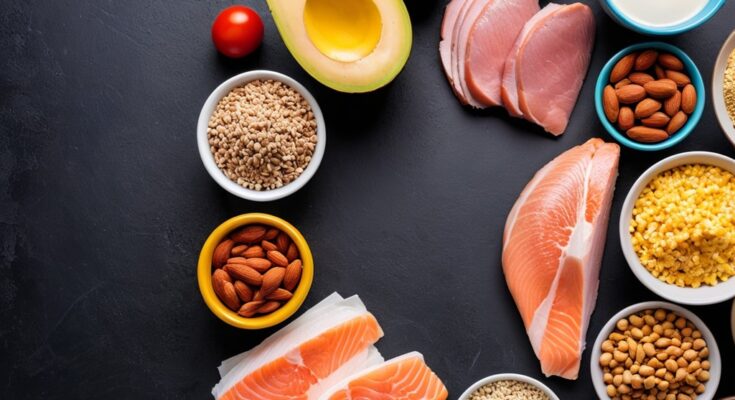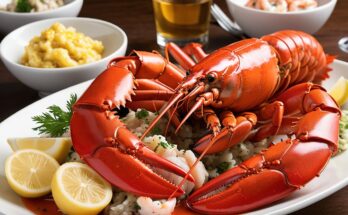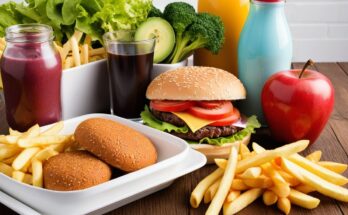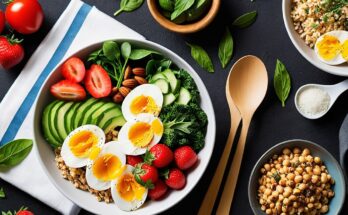Unlock the Power of High Protein Foods: Your Complete Guide to a Stronger, Healthier You
Are you looking to boost your energy levels, build lean muscle, or simply feel more satisfied throughout the day? Incorporating high protein foods into your diet might be the key. Protein is one of the most essential nutrients our bodies need, playing a critical role in everything from muscle repair to immune function. But with so many options available, it can be overwhelming to know where to start.
In this comprehensive guide, we’ll dive into the world of high protein foods, exploring the best options, why they’re important, and how to easily incorporate them into your daily meals. Whether you’re a fitness enthusiast, a busy professional, or someone just starting your health journey, this post is packed with actionable tips and insights to help you make the most of your diet.
Why Protein Matters: The Science Behind High Protein Diets
Before we jump into the list of high protein foods, let’s take a moment to understand why protein is so vital.
Protein is often referred to as the “building block of life” because it’s essential for growth, repair, and maintenance of body tissues. Here are just a few reasons why protein should be a priority in your diet:
- Muscle Growth and Repair: If you’re active or working out regularly, protein is crucial for muscle recovery and growth. It helps your body rebuild and strengthen muscle fibers after exercise.
- Weight Management: Protein keeps you fuller longer, reducing cravings and helping you maintain a healthy weight.
- Energy Levels: Protein is a sustainable source of energy, preventing the peaks and crashes that come with high-carb or high-sugar diets.
- Immune Function: Proteins like antibodies play a key role in fighting off infections and keeping your immune system strong.
The recommended daily intake of protein varies based on factors like age, weight, and activity level, but a general rule of thumb is to consume 0.8-1.2 grams of protein per pound of body weight daily. For example, a 150-pound person should aim for 120-180 grams of protein per day.
The Best High Protein Foods You Should Be Eating
Now that we’ve covered the importance of protein, let’s explore some of the best high protein foods to add to your diet. We’ll break them down into categories to make it easy to find something that fits your lifestyle.
Animal-Based High Protein Foods
- Chicken Breast
- Protein Content: Approximately 31 grams per 3-ounce serving.
- Why It’s Great: Chicken breast is lean, affordable, and versatile. It’s a staple in many fitness diets because it’s low in fat and high in protein. Try grilling, baking, or adding it to salads for a quick protein boost.
- Grass-Fed Beef
- Protein Content: About 22 grams per 3-ounce serving.
- Why It’s Great: Grass-fed beef is not only high in protein but also packed with iron and other nutrients. Opt for lean cuts to keep it healthy.
- Eggs
- Protein Content: 6-7 grams per large egg.
- Why It’s Great: Eggs are one of the most affordable and convenient high protein foods. They’re also rich in vitamins like B12 and vitamin D.
- Greek Yogurt
- Protein Content: Around 20 grams per 6-ounce serving.
- Why It’s Great: Greek yogurt is a great source of probiotics and protein. It’s perfect for breakfast, snacks, or as a base for smoothies.
- Salmon
- Protein Content: Approximately 20 grams per 3-ounce serving.
- Why It’s Great: Salmon is not only high in protein but also rich in omega-3 fatty acids, which are great for heart health.
- Turkey Breast
- Protein Content: About 24 grams per 3-ounce serving.
- Why It’s Great: Similar to chicken breast, turkey breast is lean and versatile. It’s a great addition to sandwiches or wraps.
Plant-Based High Protein Foods
For those following a vegetarian or vegan diet, there are plenty of high protein plant-based options to choose from.
- Chickpeas
- Protein Content: About 15 grams per 1 cup cooked.
- Why It’s Great: Chickpeas are versatile and can be added to salads, stir-fries, or made into hummus.
- Lentils
- Protein Content: Approximately 18 grams per 1 cup cooked.
- Why It’s Great: Lentils are a powerhouse of protein and fiber, making them a great addition to soups and curries.
- Quinoa
- Protein Content: About 8 grams per 1 cup cooked.
- Why It’s Great: Quinoa is a complete protein, meaning it contains all nine essential amino acids. It’s a great base for salads or as a side dish.
- Tofu
- Protein Content: Around 20 grams per 3-ounce serving.
- Why It’s Great: Tofu is a fantastic plant-based protein source that absorbs flavors well, making it a great addition to stir-fries and curries.
- Black Beans
- Protein Content: Approximately 15 grams per 1 cup cooked.
- Why It’s Great: Black beans are rich in protein, fiber, and vitamins. They’re a great addition to tacos, salads, and rice dishes.
- Pea Protein Powder
- Protein Content: Varies by brand, but typically around 20 grams per scoop.
- Why It’s Great: Pea protein is a popular choice for vegans because it’s hypoallergenic and easily digestible. It’s a great way to boost your protein intake in smoothies.
Dairy-Based High Protein Foods
- Cottage Cheese
- Protein Content: Approximately 28 grams per cup.
- Why It’s Great: Cottage cheese is low in calories and high in protein, making it a great snack or addition to meals.
- Milk
- Protein Content: About 8 grams per cup.
- Why It’s Great: Milk is a simple and affordable way to increase your protein intake. You can drink it on its own or add it to smoothies and oatmeal.
- Cheese
- Protein Content: Varies by type, but typically around 6-7 grams per ounce.
- Why It’s Great: Cheese is a tasty way to add protein to your meals. Just be mindful of portion sizes, as it can be high in calories.
How to Incorporate More High Protein Foods Into Your Diet
Now that we’ve covered the best high protein foods, let’s talk about how to easily incorporate them into your meals.
Breakfast Ideas
- Start your day with a protein-packed breakfast like scrambled eggs, Greek yogurt with granola, or a protein smoothie.
- Add a scoop of pea or whey protein powder to your oatmeal for an extra boost.
Lunch Ideas
- Salads are a great way to include high protein foods like grilled chicken, tofu, or beans.
- Try a turkey or chicken wrap with plenty of veggies for a satisfying meal.
Dinner Ideas
- Grilled salmon or lean beef paired with quinoa and steamed vegetables makes for a balanced and protein-rich dinner.
- Stir-fries with tofu, lentils, or chickpeas are both flavorful and nutritious.
Snack Ideas
- Keep hard-boiled eggs, Greek yogurt, or cottage cheese on hand for quick snacks.
- A handful of nuts or a protein bar can be a convenient option when you’re on the go.
Tips for Maximizing Your Protein Intake
- Meal Prep: Preparing meals in advance can help you ensure you’re getting enough protein throughout the day.
- Variety is Key: Don’t stick to the same protein sources every day. Mix and match to keep your diet interesting and nutrient-rich.
- Supplements: If you’re struggling to meet your protein goals, consider adding a protein powder supplement to your routine.
Final Thoughts: High Protein Foods for a Healthier Lifestyle
Incorporating high protein foods into your diet doesn’t have to be complicated or time-consuming. With so many delicious and versatile options available, you can easily create meals that are both nourishing and satisfying.
Remember, protein is more than just a nutrient—it’s a tool to help you feel your best and achieve your health goals. Whether you’re looking to build muscle, lose weight, or simply maintain a healthy lifestyle, high protein foods can play a starring role in your journey.
So, start exploring the world of high protein foods today and take the first step toward a stronger, healthier you!




